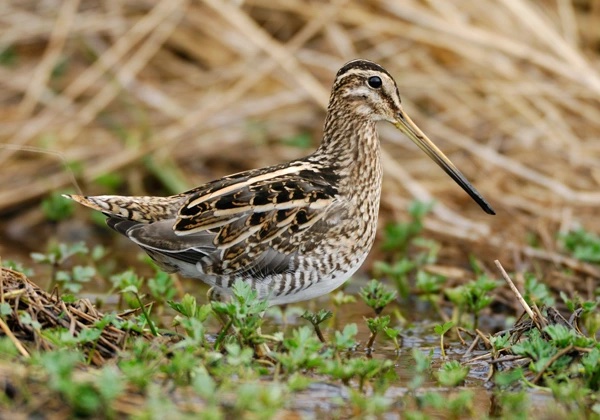Snipe
- Home
- Why We Do It
- Conservation
- Snipe
Key Facts
- Nest grass-lined shallow scrape in dense vegetation
- 4 eggs, 1 – 2 broods, April – July
| Scientific Name: | Gallinago gallinago |
| Number in Britain: | 64,500 breeding pairs |
| Conservation Status: | |
| in UK | Amber |
| in Europe | Least Concern |
| Globally | Least Concern |

The smallest breeding wader we have on our reserves, the snipe is only about 9/10 inches long. It’s a pretty little bird with a selection of colours on it from light buff to black.
When flushed from the ground it takes off with a distinctive zigzag flight and is prized as a sporting bird for that reason as well as it’s flavour when cooked.
During the breeding season, the males denote their territory by “drumming” which is a sound caused by the bird climbing quite high in the sky then dropping very quickly and passing air through the tail feathers which causes a buzzing sound. This is mainly performed in early mornings and evenings although may be heard on quiet sunless days.
The female lays four eggs mid buff coloured eggs which are marked with brown in a well-made grass cup and when the young hatch the female takes two chicks and the male two chicks to care for individually. This is a survival strategy so all their young are not in the same basket if a predator were to find them. The snipe also feed the young on invertebrates until they are large enough to feed themselves.
The wader scrapes we make in damp areas are an aid to all the waders when it comes to finding food.
